7Zip password protect your files. By using 7Zip to archive or compress your files, you do not just organize and make the file smaller, but you can also have your data password protected with the 7Zip. And if your file is too important, the 7Zip supports AES-256 encryption to keep your data safe. That’s one of the most sophisticated and widely used security protocols by giant companies to date, which includes the CIA of U.S.
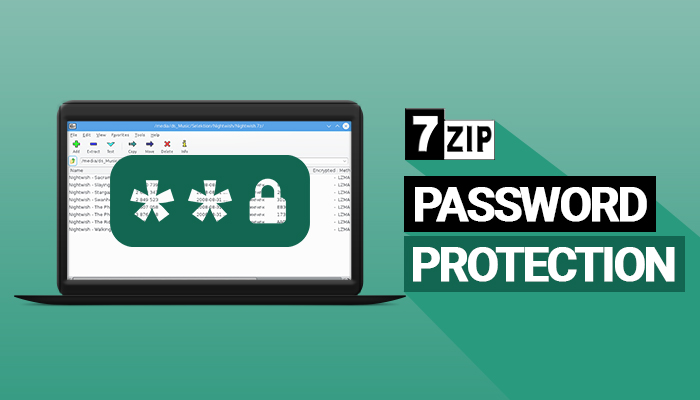
The 7Zip is one of the best archiving and compression tools in its field. It is even better than similar compression tools that are popular for some basic consumers. Also, 7Zip is not just about creating and extracting ZIP and RAR files. It supports the most number of compression formats that exist today.
On that note, it is one of the factors that make 7Zip a powerful tool in its focused field. Whether it’s for Windows, Mac, or 7Zip for Linux OSes. And if you want your files to get the highest security from a simple archiving tool, you cannot go wrong with password protect on 7Zip. Do you want proof to know which is the best tool, 7Zip vs WinRAR? Visit 7Zip Help.
Contents
Why Do You Need Password Protect on 7Zip?
7Zip also takes advantage of the present processors that are developed with multi-core capability. As a matter of fact, it is used on benchmark tests to measure a certain processing unit’s full capacity. So it is not just a tool for file compression and decompression, it is also a tool for professionals for testing computing machines.
This is also helpful when you are trying to send ZIP files through email or any messaging platform. The password protect on 7Zip will help keep the files secured and accessible to its intended recipient only. To share the password that can open the protected file, try sending it through a different platform like through text message or a different messaging app.
Anyway, this is just an example. You can always use other arrangements and other ways to exchange information in place of a typically secured communication. The password is an indication that 7Zip is safe.
How to Use Password Protect on 7Zip?
The password protects on 7Zip is useful when you have important files on a shared computer. This will make your personal or business documents only accessible by you and you alone.
This is where it gets more interesting. The 7Zip uses the simplest approach in creating a password-protected file or archive. It uses a straightforward method that even a child can do it in just a few clicks.
Since you came here to find out how to use password protect on 7Zip, we will give you what you came here for. You will be delighted to know how simple the steps are. Anyway, here is the brief step-by-step guide on how to use password protection on 7Zip.
We understand if you want to learn every details about 7Zip. For that, you can also explore the 7Zip command line or how to fix 7Zip cannot open file.
Install 7Zip
To take advantage of the benefits of 7Zip as well as to learn how to use 7Zip of course, you have to download and install it first on your computer. The following is a guide on how to do it:
- The first you need to do it make sure you have 7Zip installed on your Windows or 7Zip for Mac system. If you have not yet installed one, you may download an installer from the 7Zip download page.
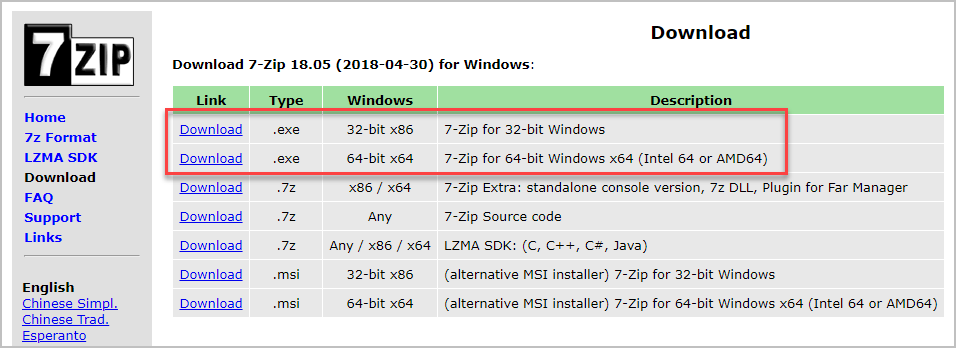
- The file is just around 1.5MB so you should have the installer in just a couple of seconds.
- Install 7Zip by double-clicking on the installer.
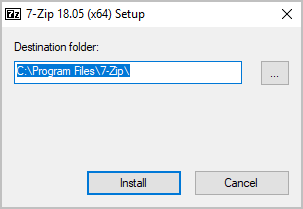
- Once the installation finishes, you should be able to see 7Zip on the system menu when you right-click on your mouse.
- If not, restart your operating system for the installation to take effect.
How to Recover 7Zip Password
If you forgot your 7Zip password, you can try to recover it either by guessing or you can take help from several password recovery tools available.
The ability to protect our digital files with passwords has become essential in safeguarding our personal and sensitive information in today’s digital age. 7Zip is certainly one of the most reliable and popular file compression and encryption tools available. However, it is not uncommon for individuals to forget or misplace their passwords, thereby facing the daunting task of trying to recover them. In this editorial comment, we will explore some helpful methods and techniques to aid in the recovery of a lost or forgotten 7Zip password.
One of the first and simplest strategies to try is to rely on memory aids. Often, individuals use passwords that are personally meaningful or have some connection to their lives. Pondering on such clues and references related to the password may jog one’s memory and possibly lead to the recovery of the correct password. Additionally, it can be valuable to review any frequently used passwords and variations one tends to utilize since establishing a pattern is not uncommon.
If the above memory aid approach does not bear fruit, turning to advanced memory techniques such as mnemonic strategies might prove fruitful. Mnemonics involve creating distinctive associations between pieces of information, making it easier for our brains to recall that information later. This could involve creating vivid mental images associating numbers, letters, or symbols with something familiar, making it more likely for the password to be spontaneously remembered.
In the event that both the simple memory aids and mnemonic techniques are unsuccessful, it becomes essential to utilize specialized software tools designed explicitly for password recovery. These tools employ complex algorithms that employ various approaches such as brute-force attacks, dictionary attacks, and mask attacks to crack the encrypted password file.
Brute-force attacks work by systematically checking every possible combination and permutation of characters until the correct password is discovered. While highly effective, this method can be considerably time-consuming and is less efficient than others, particularly if the password is complex.
On the other hand, dictionary attacks are based on words commonly used as passwords. The software checks for words from an included dictionary file and its variations, making it one of the fastest approaches to recover passwords. However, this method is only effective if a hacker’s presumption aligns with the word used.
Mask attacks prove beneficial where some fragments or hints about a password are known, as users can define a mask to aid recovery based on their assumptions. The software then efficiently generates all possible combinations following the pattern created by the mask, allowing for easier and faster password recovery in comparison to brute-force attacks.
Ultimately, employing additional computational power is essential when confronting long and excessively complicated passwords despite using advanced recovery techniques. Utilizing high-performance computing resources can significantly shorten the password recovery process and increase the chance of a successful recovery.
The possibility of forgetting or losing a password can induce considerable anxiety, particularly if cherished or sensitive information is protected within a 7Zip file. However, with a systematic and determined approach, the chances of recovering a lost or forgotten password can be significantly enhanced. Investing time in memory aids and advanced techniques, alongside specific software tools and the application of computational power, offer a glimmer of hope to those in need of regaining access to their encrypted files.
Password Protect on 7Zip
After installing 7zip, it’s time to increase the security of your files. Here is how you could activate the password protect feature from ZIP.
- Now, go to the file that you want to apply the password protect feature from 7Zip.
- Right-click on the file or if you want to put multiple files, all you need is to highlight all the files. You can do this by pressing the CTRL button from the keyword while clicking on the files that you want to include in the operation.
- Once you highlighted all the necessary files, press the right-click on your mouse to see the 7Zip option.
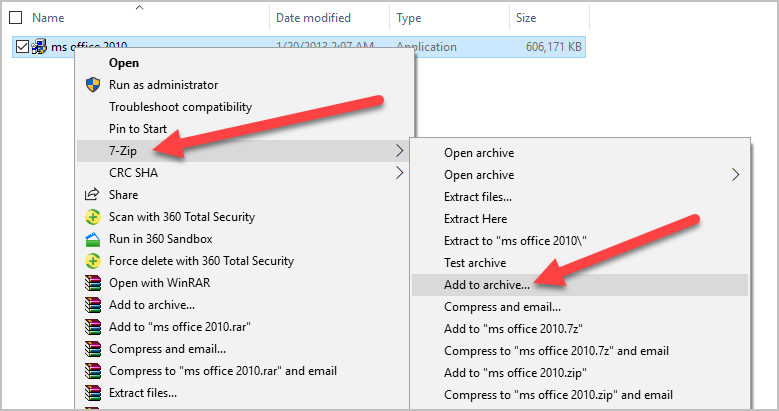
- Hover your mouse on the 7Zip to show all the menus under it.
- Now, find the “Add to Archive” and click on it to launch the 7Zip user interface.
- On the new 7Zip window, you will find the name of the compression file that you are going to create. You may rename it as you see fit or however, you want to call it.
- On the right side of the 7Zip window, you should see the “Encryption” portion. Under it, is the “Enter Password” blank tab, type in your preferred password inside it. Please be reminded that you have to use a password that is easy for you to remember and difficult for other people to guess.
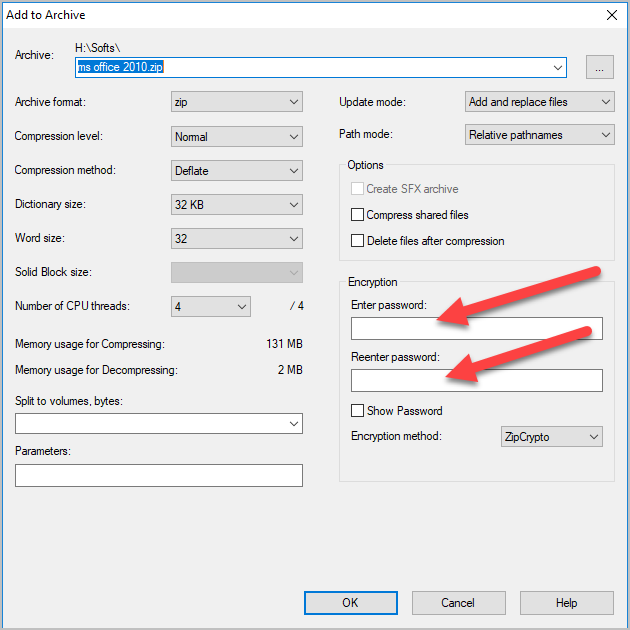
- Type again the password on the “Reenter Password” empty tab.
- On the Encryption method, you may choose between ZipCrypto and AES-256.

- If you are not familiar with the other features on the 7Zip window, we suggest that you leave those alone for now. We will have some separate articles on what those features are all about.
- Now, if you think your password is good to go, click on the “OK” button at the bottom. This will initiate the compression process, and with it, the password protect feature.
- The speed of the compression process will depend on the size and quantity of the files. The bigger the file the longer that process is. If you are archiving files with the size of 500MB, it should take only 50-60 seconds.
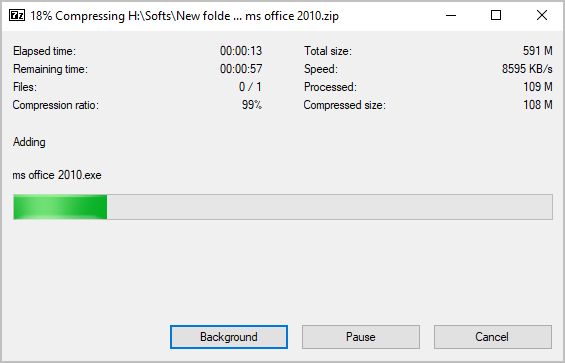
- As soon as the compression finishes, the 7Zip windows will automatically close. But this time, you will be able to find a new file next to your ordinary files.
- That’s it. You have a compressed ZIP or 7Z file that cannot be extracted without your password.
Reminder
As you can see, your original files are still there. You can choose to delete the original copies or have them saved on your external drives like USB stick or CD. You may also keep the original files on your cloud-based account, or you can save them on your smartphone.
If you want to check if the operation worked, right-click on the compressed file and choose extract. It should now ask you for the password. Fail to enter the correct password and you will get a zero-sized file.
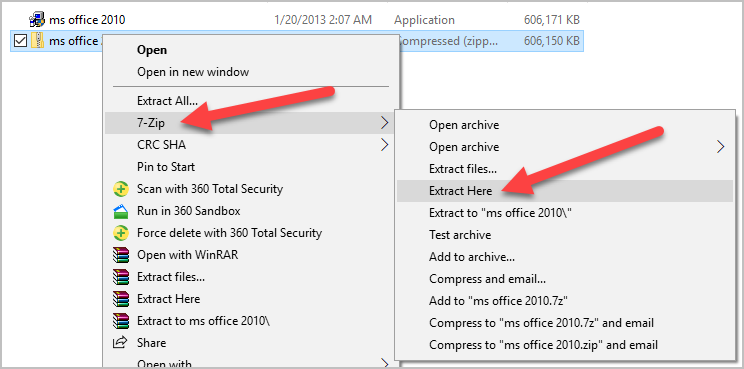
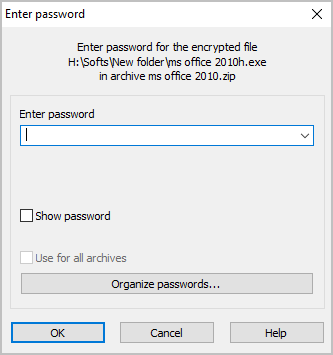
The compressed and password-protected file will be safe where you put it. But if the files inside it are far too precious, we suggest to keep them safe and secured somewhere as well just for added precaution.
Conclusion
The password protect on 7Zip may sound so simple, but it comes really handy when it matters. This is true especially if you are accessing a shared or public computer. Having a password-protected file adds that security and peace of mind in case you happen to forget it somewhere. Or perhaps, someone wants to steal your work, and this extra security will lend a huge help to you.
If you have not heard of password protect on 7Zip, what other measures and apps that you use to protect your files like documents, pictures, and videos? Tell us in the comment section. We would love to know what you guys are up to before learning about this great feature.
If you have questions and suggestions related to this topic, please feel free to type your messages in the comment section as well. We will be monitoring the comments and participate as well from time to time. Let’s all keep a positive and helpful community. Thank you for reading this far.
Is there a way to attach a password that stays on the file so it can be forwarded to another recipient?
It’s like writing your PIN code on the back of your credit card
Once you have a password protected zip file, can you add files and have them also password protected?
I was surprised when I noticed that “password protected” = No, for files I’d drag & dropped in.
Hello Phil.
Yes seem strange but not enough
Without a password, 7zip drops the files in an unsecured area(normal area). A password will not be required to read these files.
++
When I right-click on a file and then choose “7-Zip” I do not get the menu options shown here. All I get is an option to “Add to (the filename).zip.” Clicking that option simply zips the file. I don’t get any Add to Archive window with the encryption and other options as shown on this web page. I downloaded and installed the newest version of 7-Zip here in case my older version didn’t have the encryption option, but that didn’t help. How do I fix this?
Is there a way to encrypt an existing (unencrypted) .zip archive (without extracting first and following the steps above)?
Is there a way to compress and encrypt a video that needs to be stored in Microsoft Stream?
I can download it and do this but it really needs to be stored on cloud storage (Stream), as per my ethics application.
The add to context menu is not available on Windows 10 in S mode, so no right click options.
How can encryption be added to a file on Windows 10S?
When I try this I get “Access is denied – cannot open file: C:\Program files\7Zip\7zFM.tmp.
I have used 7z for years and have several files compressed with this program, but I cannot open them because I now get a password request…something I have not used for 7z files in the past since none of them are password necessary – ie, none contain any sensitive material. Am now at a loss on how to open them. Any suggestions, please.
-=dcp=-
Is there a way to keep the encrypted file remain encrypted even after the password is keyed in? Its like everytime when opening, you must key in the password. Because now after keying in the password, the archive files will be decrypted